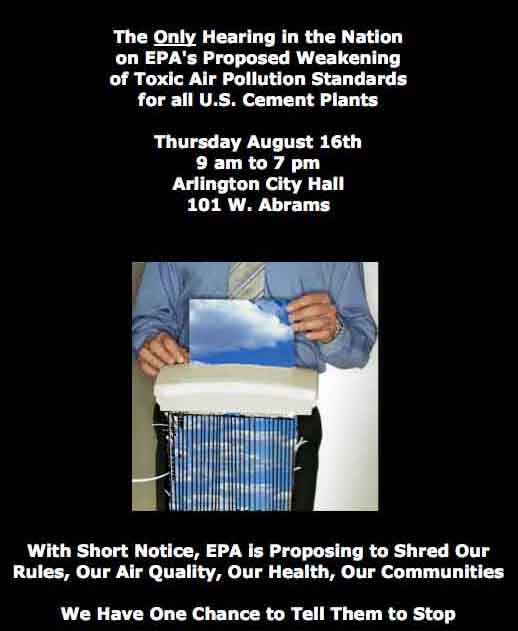Midlothian
“Animals are the Sentinels”
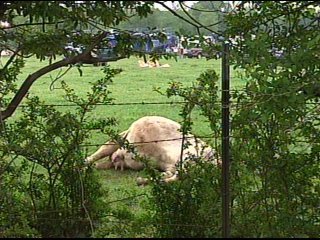 In the late 1980's Sue Pope became concerned about her horses and cows. Her favorite Arabian was developing "heave" muscles on its torso that Pope's vet said was the result of the horse straining to breathe. Her cattle were acting strangely and not developing as they should. These problems seem to come out of the blue, for no obvious reason Pope could figure out. She also noticed that she and her family didn't feel the same either and wondered if what was affecting her animals was also affecting them. She spoke with her neighbors, some of whom were also noticing strange things among their stock and themselves. They didn't have any answers either. That's when Pope started to look for causes outside the gate of her small Midlothain ranch.
In the late 1980's Sue Pope became concerned about her horses and cows. Her favorite Arabian was developing "heave" muscles on its torso that Pope's vet said was the result of the horse straining to breathe. Her cattle were acting strangely and not developing as they should. These problems seem to come out of the blue, for no obvious reason Pope could figure out. She also noticed that she and her family didn't feel the same either and wondered if what was affecting her animals was also affecting them. She spoke with her neighbors, some of whom were also noticing strange things among their stock and themselves. They didn't have any answers either. That's when Pope started to look for causes outside the gate of her small Midlothain ranch.
And that was the beginning of what eventually turned into Downwinders at Risk. Because of her own experience it has been Sue Pope's belief that more than expensive monitors or dubious risk assessment studies, "animals are the sentinels" for human health. They are literally the canary furtherest down the coal mine.
When the ATSDR decided to review the monitoring information from Midlothain for it's "health consultation" beginning almost ten years ago, they were in part drawn by the large file of documented cases of animals illness, disease and deformities. There's more than one animal stock breeder who has moved to Midlothian over the last 25 years expecting that elusive "fresh country air" to benefit their animals only to find them suffering weird symptons never experienced before in previous locations.
Animals are sentinels, especially livestock, because they don't go to school or work, but stay in the same place all day and night, they graze exclusivley on local plants grown in the local soil. They drink the local surface and/or well water. Livestock have the most exposure and the most "exposure pathways" to whatever potentially harmful chemicals might be in the environment. If it's harming the animals, it's probaly harming people as well.
That's the context for a new article out in The Nation about animals gettign sick in the gas patch.
"Earlier this year, Michelle Bamberger, an Ithaca veterinarian, and Robert Oswald, a professor of molecular medicine at Cornell’s College of Veterinary Medicine, published the first (and, so far, only) peer-reviewed report to suggest a link between fracking and illness in food animals. The authors compiled case studies of twenty-four farmers in six shale-gas states whose livestock experienced neurological, reproductive and acute gastrointestinal problems. Exposed either accidentally or incidentally to fracking chemicals in the water or air, scores of animals have died. The death toll is insignificant when measured against the nation’s livestock population (some 97 million beef cattle go to market each year), but environmental advocates believe these animals constitute an early warning.
Exposed animals “are making their way into the food system, and it’s very worrisome to us,” Bamberger says. “They live in areas that have tested positive for air, water and soil contamination. Some of these chemicals could appear in milk and meat products made from these animals.”
In Louisiana, seventeen cows died after an hour’s exposure to spilled fracking fluid. (Most likely cause of death: respiratory failure.) In north central Pennsylvania, 140 cattle were exposed to fracking wastewater when an impoundment was breached. Approximately seventy cows died; the remainder produced eleven calves, of which only three survived. In western Pennsylvania, an overflowing waste pit sent fracking chemicals into a pond and a pasture where pregnant cows grazed: half their calves were born dead. The following year’s animal births were sexually skewed, with ten females and two males, instead of the usual 50-50 or 60-40 split.
In addition to the cases documented by Bamberger, hair testing of sick cattle that grazed around well pads in New Mexico found petroleum residues in fifty-four of fifty-six animals. In North Dakota, wind-borne fly ash, which is used to solidify the waste from drilling holes and contains heavy metals, settled over a farm: one cow, which either inhaled or ingested the caustic dust, died, and a stock pond was contaminated with arsenic at double the accepted level for drinking water."
People used to ask Downwinders why we decided to take on air pollution from the gas industry. The reason is that all of the red flags we saw over the years in Midlothian are also being raised around gas facilities – individually and/or collectlively. Many of the same chemicals, many of the same health effects from those chemicals, and then the warning from the animals.
Better than TCEQ monitors. Better than out-of-date risk assessments. Animals are some of the best Guinea Pigs we have in the laboratory of chemicals we all swim in. If we would only listen.
“Statistically Significant Increase” in Risk of Dying from Cancer in Towns Near Incinerators
 You know that argument you sometimes hear about how those ecologically-minded Europeans are burning everything in incinerators and cement plants, so it must be OK to do it here? Maybe not so much.
You know that argument you sometimes hear about how those ecologically-minded Europeans are burning everything in incinerators and cement plants, so it must be OK to do it here? Maybe not so much.
In one of the most ambitious and far-ranging efforts of its kind ever attempted, the newly-published results of a 10-year study from Spain's national Center for Epidemiology looked for 33 different kinds of cancer in dozens of Spanish communities that hosted "waste incinerators and installations for the recovery or disposal of hazardous waste." They found "a significant higher risk from all cancers in towns near these industries."
Cancer impacts were greater around waste incinerators and scrap metal operations – you know like the three giant Midlothian cement plants upwind of DFW that are burning larger and larger amounts of industrial wastes and the steel mill across the street from them melting scrap cars.
Researchers used standard computer modeling to estimate what cancer rates should be in the host communities and then compared them to what they actually were.
"Excess cancer mortality was detected in the total population residing in the vicinity of these installations as a whole and, principally, in the vicinity of incinerators and scrap metal/end-of-life vehicle handling facilities, in particular. Special mention should be made of the results for tumors of the pleura, stomach, liver, kidney, ovary, lung, leukemia, colon–rectum, and bladder in the vicinity of all such installations. Our results support the hypothesis of a statistically significant increase in the risk of dying from cancer in towns near incinerators and installations for the recovery or disposal of hazardous waste."
There has never been any kind of systematic study of cancer rates around and downwind of the Midlothian cement plants. From the Texas birth defect registry we know that certain reproductive organ birth defects that are associated with pollutants known to have been released from the plants are higher than the state average in Ellis County.
This study, as well as the recent warnings of the federal Agency for Toxic Substances and Disease Registry about the public health dangers of the pollution coming from the Midlothian cement plants arrives at a time when the plants are gearing up to add plastics, car interiors, and other kinds of garbage to their lists of "fuels" that will be burned. After losing the fight to be able to burn hazardous wastes willy-nilly in cement plants, the industry is turning to industrial and municipal garbage that can produce many of the same worrisome kinds of pollution. This is what makes the EPA rules governing the emissions of the nation's cement plants – rules that are still in play – so very important.
Hell Freezes Over: Why the New Federal Report on Midlothian Matters
Everything in italics and "quotation marks" below is a direct quote from the latest chapter of the ATSDR's (Agency for Disease Registry and Toxic Substances) "health consultation" on the impact of certain kinds of industrial air pollution on the local population.
You should take five minutes to glance over the sentences. They've taken a better part of a decade and a great deal of citizen persistence to make it to print. You can read them now only because of a petition to ATSDR by local Midlothian residents, spearheaded by Sal and Grace Mier in 2005, prompted the Agency to get involved.
They're also rarer than hen's teeth. Because the words actually come together in sentences to conclude human health was likely harmed by the pollution from Midlothian's three cement plants and steel mill, as well as recommend decreasing that pollution.
Among grassroots activists, ATSDR has a notorious reputation for issuing reports that are "inconclusive by design." The joke is that the agency never met a facility it couldn't learn to live with. And sure enough, previous chapters in this saga have disappointed. Just two years ago, ASTDR's shoddy work in investigating health impacts in Midlothian and elsewhere across the country was the subject of a Congressional hearing.
These ATSDR reports generate no new data. Instead, they are retrospective looks back at the available sampling/monitoring information and a piecing together of possible exposure paths and levels. As such, they're only as good as the data they can digest. In Midlothian's case, that means they're completely dependent on state monitoring – criticized by citizens for years as being inadequate. Nevertheless, with this latest report, citizens have been somewhat vindicated because of what even that inferior sampling revealed.
The health impacts described in this latest report are also limited to what are called "Criteria Pollutants" – old school substances like lead, soot, sulfur dioxide, and ozone that have been regulated by the Clean Air Act for decades. They do not apply to more exotic kinds of air pollution like endocrine disruptors, which there's little or no monitoring for at all.
So there are a lot of missing pieces, but the ATSDR's conclusions and recommendations have an impact on your lungs and maybe your own local fight, even if you don't have a Midlothian zip code. For the first time a federal agency known to avoid coming to any conclusion about anything was forced to say that human health was adversely affected by the operations of industry in Midlothian.
There's a public meeting on this report on December 6th from 7 to 8:30 pm at the Midlothian Conference Center.
Health Consultation/Assessing the Public Health Implications of the Criteria (NAAQS) Air Pollutants and Hydrogen Sulfide MIDLOTHIAN AREA AIR QUALITY MIDLOTHIAN, ELLIS COUNTY, TEXAS
NOVEMBER 16, 2012 U.S. DEPARTMENT OF HEALTH AND HUMAN SERVICES
Agency for Toxic Substances and Disease Registry
Division of Community Health Investigations
Recommendations:
"Texas Commission on Environmental Quality (TCEQ) should take actions to reduce future SO2 emissions from TXI to prevent harmful exposures."
"TCEQ should take actions to reduce future PM2.5 emissions from TXI and Gerdau to prevent harmful exposures."
"TCEQ should continue efforts to reduce regional ozone exposures."
"TCEQ should insure that levels of these air pollutants do not increase to levels of concern in the future."
"TCEQ should conduct ambient air monitoring to characterize exposures to persons located downwind of the Ash Grove and Holcim facilities and take actions to reduce SO2 emissions from these facilities if harmful exposures are indicated."
"TCEQ should conduct appropriate ambient air monitoring to characterize exposures to persons located downwind of the Ash Grove and Holcim facilities and take actions to reduce PM2.5 emissions from these facilities if harmful exposures are indicated. In addition, particulate matter monitoring is needed in residential areas that are in immediate proximity to the facilities’ limestone quarries."
"In ATSDR’s judgment, one notable gap in monitor placement is the lack of monitoring data for residential neighborhoods in immediate proximity to the four industrial facilities, where fugitive emissions (those not accounted for in stack emissions) likely have the greatest air quality impacts."
Human health was likely harmed, and is still threatened by industrial pollution from Midlothian
From Sulfur Dioxide:
"Breathing air contaminated with sulfur dioxide (downwind of TXI's cement plant and the Ameristeel steel mill) for short periods could have harmed the health of sensitive individuals.…ATSDR cannot determine if harmful exposures to SO2 have been occurring downwind of the Holcim and Ash Grove facilities."
"All 24-hour values in Midlothian were lower than EPA’s former standard. However, the World Health Organization’s health comparable guideline is 8 ppb (WHO, 2006). This value was exceeded at both the Midlothian Tower and Old Fort Worth Road stations in most years of monitoring through 2008…"
"Overall, in the years 1999 to 2001, Old Fort Worth Road (monitoring site north of TXI) ranked among the stations with the highest 24-hour average sulfur dioxide concentrations in the state. As sulfur dioxide emissions from TXI Operations decreased in following years, so did the measured concentrations at this station."
From Particulate Matter, or Soot:
"Public health concern is warranted for adverse health effects from long-term exposure to PM 2.5 in Cement Valley"
"In the past (1996–2008), annual average PM 2.5 levels measured were just below the range of concentration proposed by EPA for lowering the annual average standard…Moreover, many of the annual average PM 2.5 concentrations were above the more conservative WHO health guideline (10 μg/m3)."
"No PM 2.5 monitoring data are available to evaluate exposures downwind of the Ash Grove facility. Furthermore, although annual average PM2.5 levels detected at the Holcim monitor indicate possible harmful levels…."
"We estimated that annual average PM2.5 levels in the vicinity of the Gerdau Ameristeel monitor, from 1996 to 1998, could have ranged from about 22.6 to 26.4 μg/m3, which is above both the current and proposed EPA standard. Using EPA’s approach, the 3-year average level might have been above the NAAQS standard of 15 μg/m3 for these years in the vicinity of the Gerdau Ameristeel monitor. Applying this same approach to annual average PM10 data from other monitors suggests that PM 2.5 levels could have been close to the current and proposed PM2.5 standard, especially for the Wyatt Road, Old Fort Worth Road, Gorman Road, and Midlothian Tower monitors."
"Consistent with the other pollutants discussed earlier, the estimated annual PM 2.5 emissions listed for these facilities are among the highest for Ellis County and also rank high among industrial sources statewide."
From Lead:
"Past lead air exposures during the period 1993 to 1998, in a localized area just north of the Gerdau Ameristeel fence line, could have harmed the health of children who resided or frequently played in this area….In the mid-1990s, the lead levels measured in this area ranked among the highest lead concentrations measured statewide."
From Smog:
"Scientific studies indicate that breathing air containing ozone at concentrations similar to those detected in Midlothian can reduce lung function and increase respiratory symptoms, thereby aggravating asthma or other respiratory conditions. Ozone exposure also has been associated with increased susceptibility to respiratory infections, medication use by persons with asthma, doctor’s visits, and emergency department and hospital admissions for individuals with respiratory disease. Ozone exposure also might contribute to premature death, especially in people with heart and lung disease. School absenteeism and cardiac-related effects may occur, and persons with asthma might experience greater and more serious responses to ozone that last longer than responses among people without asthma."
"The Midlothian Tower site recorded ozone concentrations above the level of the NAAQS for several years (TCEQ, 2011b), and the Old Fort Worth Road site has been measuring ozone concentrations close to the level of the NAAQS. Based on the data from both monitors, from August 1997 to September 2011, the 8-hour EPA ozone standard has been exceeded 236 times."
From Breathing Multiple Pollutants:
"ATSDR believes that sufficient information exists to warrant concern for multiple air pollutant exposures to sensitive individuals, especially in the past….The ability of the scientific community to fully and quantitatively evaluate the health effects from the mixture of air pollutants people are exposed to is at least ten years away (Mauderly et al., 2010)……The current state of the science limits our ability to make definitive conclusions on the significance of simultaneous exposures to multiple criteria air pollutants. ATSDR’s conclusions are based on our best professional judgment related to our understanding of the possible harmful effects of air pollutant exposures in Midlothian and our interpretation of the current scientific literature; therefore, these conclusions are presented with some uncertainty."
From New Production:
"Reductions in SO2 levels in Cement Valley have occurred since late 2008 resulting in exposures to both sensitive individuals and the general public that are not expected to be harmful. These reductions may be caused, in part, by declining production levels at local industrial facilities. Future harmful exposures in Cement Valley could occur if production rises to at least previous levels and actions are not taken to reduce SO2 emissions."
Regulatory "Safe Levels" Very Often Aren't
"Past SO2 exposures were not above the Environmental Protection Agency (EPA) standard in place at that time but were above the current standard."
"Past lead air exposures were not above the EPA standard at that time but were above the current standard.…The scientific community now believes that the current standard (15 μg/m3) for fine PM (measured by PM2.5) is a better indicator of possible long-term health effects from PM exposures than was the former EPA annual average standard for PM10 (EPA, 2006b)."
Even Low-Level Cadmium Exposure in Womb Can Lead to Lower IQ
 By way of the Environmental Health News comes word of a new study looking at the effects on low-level, "ambient" levels of the toxic metal Cadmium on 5 year-olds in Bangladesh.
By way of the Environmental Health News comes word of a new study looking at the effects on low-level, "ambient" levels of the toxic metal Cadmium on 5 year-olds in Bangladesh.
Although the exposure pathway in the study assumes the Cadmium is coming primarily from a diet of food grown in contaminated soil, the results speak to the possible effects of any kind of risk – inhalation or ingestion.
"Prenatal exposures to the metal cadmium — even at low levels common in most countries — can have long-lasting effects on children's IQ. A study from Bangladesh found that 5-year-olds who were exposed through their mothers to higher levels had IQs that were 2 to 3 points lower than less-exposed children. The new evidence suggests that even low-level exposures before birth may have continued effects on children's brain function.On average, scores dropped by 2 to 3 points in children with the highest exposures when compared to those with the lowest exposures. Even small drops in IQ may affect a child’s ability to succeed at school and work later in life. Lower IQ's across the population also have large impacts on society."
Cadmium is a naturally-occurring metal contaminant found at low levels in the environment. Industry uses it to make batteries, coat and plate plastics and other metals, and make paint (remember Cadmium Red?). It's also emitted by car exhaust, the burning of industrial wastes, coal, and oil. When spread on fields, fertilizers and sewage sludge contaminated with cadmium can increase levels in cropland soils.
What are some possible local sources of cadmium in the air? The Midlothian cement plants that are now increasingly burning industrial wastes. Steel mills – like the Ameristeel one in Midlothian. Lead smelters like the one Exide is closing up at the end of the month in Frisco, along with the slag and battery chips the smelter "landfarmed" in Frisco for decades. These are all in addition to the Cadmium you may be ingesting through your diet or by sucking on that cute charm bracelet you bought that was made in China.
2nd TCEQ Clean Air Plan in Four Years Fails, Leaves Air Dirtier
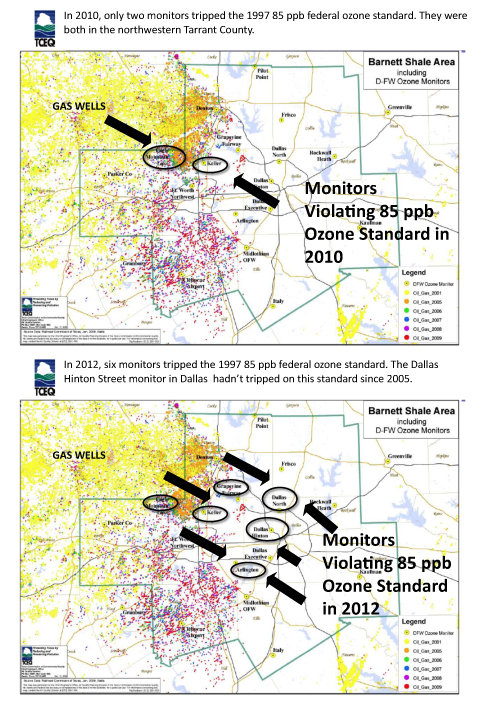 For the second time in four years a state-designed clean air plan to bring safe and legal air to DFW residents has failed, missing its goal by an even wider margin than on its first try, and leaving local air quality worse than when it started.
For the second time in four years a state-designed clean air plan to bring safe and legal air to DFW residents has failed, missing its goal by an even wider margin than on its first try, and leaving local air quality worse than when it started.
November 1st marked the official end of the eight-month 2012 ozone season. According to the Texas Commission on Environmental Quality, or TCEQ, its plan was supposed to deliver record-breaking clean air to DFW this summer on its way to bringing the region into compliance with the Clean Air Act for the first time in two decades.
“You got your fracking fluid in my cement!” Kiln Disposal of Drilling Wastes.
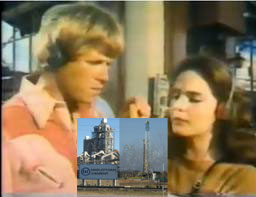 It was inevitable. Like chocolate and peanut butter. Like rats and the plague.
It was inevitable. Like chocolate and peanut butter. Like rats and the plague.
Two notoriously polluting industries find solace in each other's ability to scratch each other's dirty, irritating itches.
Cement plants are always looking for ways to get paid to burn other people's garbage. It takes a lot of energy to fire a 20-foot flame at 2000 degrees 24/7 in order to cook rock. It also takes a lot of "additives". That's why cement plants started burning other companies' hazardous wastes in the 70's and 80's. Because of a loophole in federal law, 50-year old cement plants with no modern pollution controls were allowed to charge for burning highly toxic wastes from refineries and chemical plants that were otherwise supposed to be going to fully-regulated hazardous waste disposal sites.
But those official sites cost more to use, and the cement plants cost so little. That's right, cement plants charged these polluters to dispose of their wastes, but not more than the incinerators or landfills with all the bells and whistles of "regulation." In this way, cement plant operators double dip – they don't have to shell out as much for fuel they'd have to buy, and they get paid a profit to be a Dispos-All for industry. And by the way, industry calls this "recycling."
Because of the persistence of Downwinders at Risk and other citizens' groups, this loophole has been slowly but surely closing, meaning less and less hazardous waste is being burned in US cement kilns. From a peak of almost 30 kilns burning toxics in the in the 1990's, we're now down to less than a dozen. But to take the place of this lucrative lost market, cement plants across the country are turning to "non-hazardous" waste to burn. Tires, but also municipal garbage, plastic wastes, used oils, shingles, car parts and other kinds of wastes. TXI's new permit allows the burning of a dozen different kinds of industrial wastes at its huge kiln in Midlothian.
While these wastes are classified as "non-hazardous," when they come in the front gate of a kiln, it turns out they can release a lot of toxic pollution when they're incinerated. Metals like lead and cadmium and arsenic that don't burn (consult your High School physics textbook) are present. So are PCB's that have Dioxin. But burning plastic or chlorinated wastes means you can generate Dioxins even without having them present in the wastes to begin with. There's also Mercury in some of the wastes from cars that TXI and other kilns wants to burn.
So you have the release of exactly the same kinds toxic pollution you were concerned about with the burning of officially-classified hazardous wastes. But now, it's taking place "legally," – or at least it is until the law hasn't catches-up with the consequences of this kind of low-rent disposal operation. Have a waste you want to get rid of? Send it to your local neighborhood cement plant. They'll burn anything.
Enter the Natural Gas industry. They've been getting a lot of bad PR lately about their own waste problems. They have billions of gallons of what they like to call "fracking fluid," and what the rest of us would call "hazardous wastes" that's so toxic it must be disposed of in a deep underground injection well after only being used once, isolated from the rest of the earth's environment forever. But because of some well-placed loopholes, this "fracking fluid" is not considered "official" hazardous waste under federal rules. It will just unofficially injure you with its toxins.
As it turns out, injecting billions of gallons of "non-hazardous" toxic liquid under extremely high pressure near deep underground faults is a sure way to generate earthquakes. And that's what's been happening. Not only in North Texas, but other places where there are lots of injection wells. There was another small one last night in Midlothian, right down the highway from a large deep injection well near Venus. Along with the fact that most fracking fluid cannot be or is not "recycled" now and can only be used once before disposal, the fracking fluid generated by the gas industry has turned into an embarrassing sore point.
If only there was some other way the gas industry could dispose of their drilling wastes. If only they could appear to be more environmentally-friendly and save money at the same time……
And there you have the genesis of a happy marriage made in polluter heaven. I have a facility that needs stuff to burn and mix, and I'm not that particular about what the stuff has in it. You have lots of stuff that needs to be burned, er, "recycled" and you spend less when you send it to a facility like mine not specifically built to do that job. Everybody wins!
"The use of drilling wastes and muds is most preferable in cement kilns, as a cement kiln can be an attractive, less expensive alternative to a rotary kiln. In cement kilns, drilling wastes with oily components can be used in a fuel-blending program to substitute for fuel that would otherwise be needed to fire the kiln.
Cement kiln temperatures (1,400 to 1,500 degrees C) and residence times are sufficient to achieve thermal destruction of organics. Cement kilns may also have pollution control devices to minimize emissions. The ash resulting from waste combustion becomes incorporated into the cement matrix, providing aluminum, silica, clay, and other minerals typically added in the cement raw material feed stream.
Recent studies have shown that it is feasible to use such drilling waste as substitute fuel in a cement plant. The drilling mud can be processed by a centrifuge to separate remaining water, compressed by a screw into a solid pump and conveyed.
The cement companies can contribute to sustainability also by improving their own internal practices such as improving energy efficiency and implementing recycling programs. Businesses can show commitments to sustainability through voluntary adopting the concepts of social and environmental responsibilities, implementing cleaner production practices, and accepting extended responsibilities for their products."
For veterans of The Cement Wars of the 1990's this rhetoric is certainly recycled. Cement Plants are Long, Hot and Good for America! Cement plants are the best disposal devices ever. They just make everything go "poof." That's why they were built specifically to dispose of wastes of all kinds – oh wait. nope. They were built to make cement. But how great is it that they can make an entire sideline business out of dealing with, and spewing toxic chemicals into the environment?
Even though the specific article deals with the Middle East, is there any question that a cement plant in Texas or Pennsylvania, or Ohio won't try to make the case for accepting drilling wastes, if they haven't already? The permit modification TXI received to burn plastics and car wastes from the State of Texas required no public notice at all. Citizens only found out after the fact. There are only about a dozen players left in the international cement market. If they're discussing this in Egypt and Saudi Arabia, chances are they're talking about it in Zurich, Heidelberg, and Midlothian too.
Developments like this are why its important to tell the EPA it's making a big mistake to delay and change its cement plant toxic emission rules. The industry's "inputs" are changing rapidly. Two years is too long. We need the protection of those new rules now. If you haven't already clicked and sent EPA an e-mail saying you oppose this delay, the "official" comment period is over, but it couldn't hurt for the folks in DC to see your "unofficial" opposition.
It's also a lesson in why "everything is connected." Don't live near a gas well? If you live in DFW, chances are you live downwind of a kiln that could be burning the wastes of gas wells.
Dust from Homes Near Cement Kilns Have 2 to 9 X More Dioxin
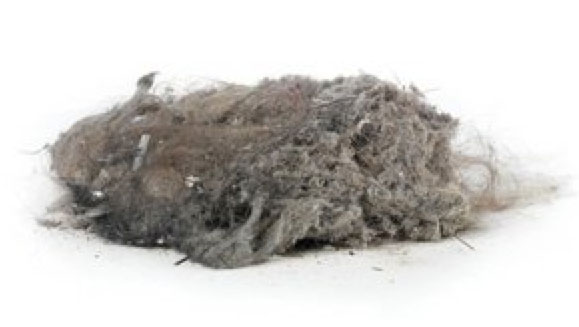 Here's some information the Midlothian Chamber of Commerce probably won't be linking to at their website.
Here's some information the Midlothian Chamber of Commerce probably won't be linking to at their website.
A national research team that includes personnel from The National Cancer Institute, Colorado Sate University, the University of Washington, and the Mayo Clinic has concluded that homes within one to three miles of cement plants contain house dust that contains 2 to 9 times more Dioxins than homes not located near kilns.
Dioxins are among the most toxic substances ever tested by EPA. Dioxin is the poison in Agent Orange. It's what made both Love Canal in New York, and Times Beach Missouri Superfund Sites. It's so toxic it's measured in grams, not pounds. It's a carcinogen and an endocrine disrupter. Like Lead and Particulate Matter, there is no known "safe" exposure level to Dioxin.
40 homes across four states were chosen from an earlier non-Hodgkin lymphoma study. Samples of dust were collected from vacuum cleaner bags and test for a variety of Dioxins (the testing for Dioxins is VERY expensive and that's one reason you don't see a lot of field tests for it). Four kinds of dioxin-emitting facilities identified by EPA were in close proximity to one or more of the sampled households – cement kilns, coal plants, sewage sludge incinerators, and medical waste incinerators. Proximity to major roadways was also considered a separate source. But "high concentrations" of Dioxins were only associated with homes near cement plants. Major roads also saw "elevated" levels, but not nearly as much as kilns.
The full study was recently published in the September edition of "Science of the Total Environment."
Midlothian currently hosts six active cement kilns. There were as many as ten up until 2008. It is the largest concentration of cement manufacturing in the nation. And all of DFW is downwind of it most of the year.
As we mentioned last week, a 1999 study by Barry Commoner and his group out of Washington University in St. Louis traced Dioxins from the TXI cement plant all the way to the Arctic Circle. So don't feel safe if you think you live far enough downwind not to be affected by the Midlothian plant plumes.
For years, Midlothian residents and others have been asking the federal government for a meaningful health effects and testing protocol for determining the total load of dioxins in and around these kilns. It hasn't come. Their requests were based on published higher incidents of certain kind of birth defects in Ellis County, as well as clusters of animal health effects observed by local ranchers and breeders. And these observations started when hazardous waste burning began in the mid-1980's. EPA has stated that waste-burning kilns release more dioxin than non-waste burning ones.
So it's important to remember that the astounding high concentrations of Dioxins that were located in homes in close proximity to a a cement kiln were linked to a kiln not burning hazardous waste. Granted, we don't know what kind of "non-hazardous wastes" it might have been burning, but the results begs the question about how much higher Dioxin levels might be in a place like Chanute, Kansas where Ash Grove's kiln is still burning hazardous wastes.
And it also once again points out why we can't be complacent about the kilns in Midlothian just because they quit burning the worst of the worst toxic wastes. Even without that practice, they pose an on-going clear and present danger to the region's public health from just their "routine" emissions. Now that all of them have or want permits to burn plastics and garbage, you could reasonably expect to see an increase in Dioxins and other forms of more exotic pollution spewing out of their tall smokestacks. And you know why their so tall don't you? So that the pollution they're releasing travels further downwind.
The Miracle of Our Perpetually-Projected Lady of the Public Hearing
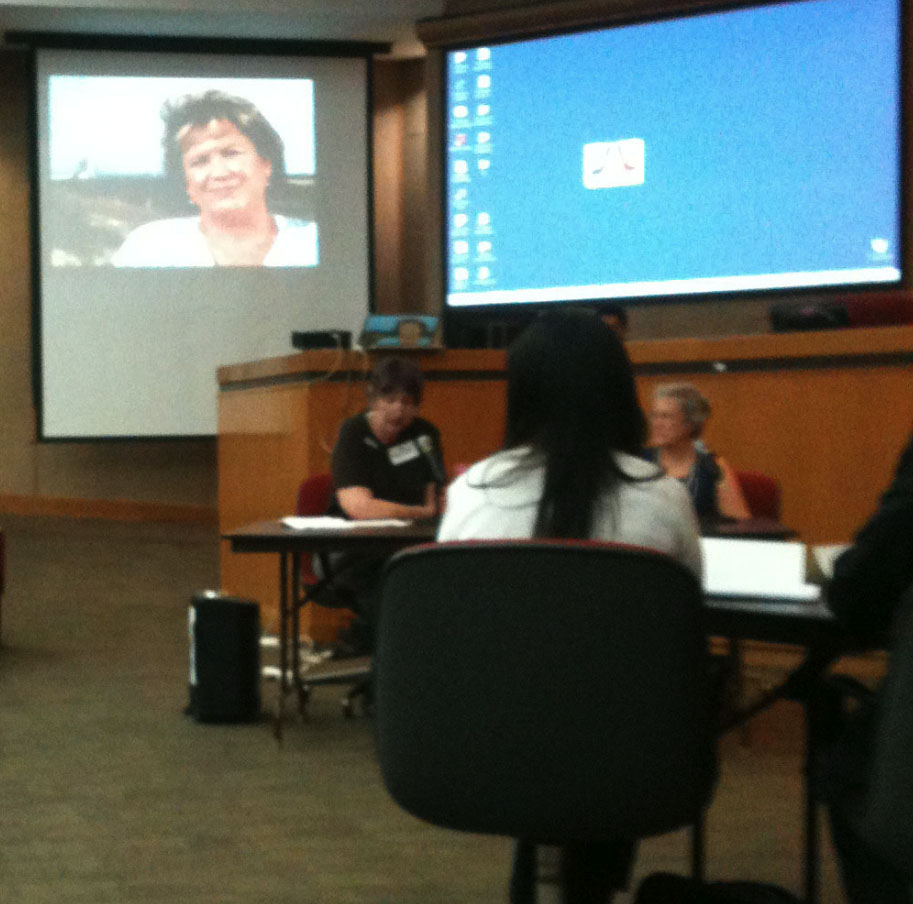 In 2009, when there was an EPA national hearing in DFW on the then-proposed cement plant air pollution rules, the mood was festive. There was a brand new administration. There was a campaign for a brand new EPA regional chief from our own ranks gearing up. The brand new air pollution rules at the center of the hearing were capping a two-decade old fight to enforce the law. They were symbolic of a shift in momentum. Citizens had won. The event was held in a large hotel ballroom, and indeed, for citizens who had been a part of that fight, it felt like a day-long celebration.
In 2009, when there was an EPA national hearing in DFW on the then-proposed cement plant air pollution rules, the mood was festive. There was a brand new administration. There was a campaign for a brand new EPA regional chief from our own ranks gearing up. The brand new air pollution rules at the center of the hearing were capping a two-decade old fight to enforce the law. They were symbolic of a shift in momentum. Citizens had won. The event was held in a large hotel ballroom, and indeed, for citizens who had been a part of that fight, it felt like a day-long celebration.
Three years later, the party was over. The newness had worn off. A once "indefensible" Bush-era ozone standard that was going to be replaced, was instead adopted by the new administration. Dr. Al had won appointment, only to pummeled into resignation by a political mugging that left even the most cynical shaking their heads. Grim persistence was the most common trait shared among the citizens who faithfully trooped to Arlington City Hall for last Thursday's national EPA hearing, where those same rules were now under attack by the Agency itself. It may have only been three calendar years, but that ballroom scene seemed sepia-toned distant now.
Which makes the attendance at Thursday's hearing more remarkable in some ways than the large crowd that gathered in 2009. Then, clean air advocates occupied 88 out of around 93 or so speaker slots available for the all-day hearing. Last week, they occupied 83 out of 86 slots. The faithful were coming, but they weren't happy about it. Isn't that always the case in these stories? Right before the faithful are rewarded with a sign?
The first speaker of the day was young Andy O'Hare of the Portland Cement Association, who, despite being on what appears to be the winning side of this battle, didn't look like he was having a good time. He dutifully and stiffly read a prepared statement that took a pro-delay stance and applauded EPA for being reasonable, i.e. agreeing with the PCA. Justification for the delay was evidenced with the help of a laminated multi-colored poster of a seven-step explanation/timeline that he held up himself without aid of easel or stand. "This timeline," he said as his unsteady grasp floated the graphic on a sea of nervous energy, "reflected the fact that the industry had concluded without a doubt that it would need exactly two years to adapt to the rules. You just had to add up the steps." It looked enough like a high school science fair project at this point for you to wonder why this industry can't invest in better PR help. We're losing to these guys?
Except from some of the same kind of praise by the Texas Cement Council, and the obligatory "We don't even agree tighter standards are necessary" rhetoric from the Texas Association of Business representative, that was the extent of testimony in favor of EPA's last-minute rollback. No individual cement manufacturers spoke. Not even TXI, headquartered only about 20 miles away in Dallas. They must think they have it in the bag.
Following O'Hare, Downwinders Director Jim Schermbeck testified in the place of Downwinders' matriarch and founder Sue Pope. News came on Friday that doctors told the 72-year old Midlothian rancher that she needed a heart transplant. Everyone thought it was a good idea for her to sit the hearing out.
But Schermbeck didn't let that happen. Not exactly. Even before any testimony began, he projected a picture of Pope on a screen above the proceedings. She was staring down at Andy when he testified. Maybe that's what made him nervous.
"These are not industry's rules. These are not EPA's rules. They are Sue Pope's rules, and you shouldn't be messing with them," said Schermbeck. Tracing Pope's 25-year fight to reduce pollution in her hometown, he told the EPA panel she and a handful of others were actually responsible for the rules and it was now destroying them. "EPA has shat on everything Sue Pope has worked for with these proposed revisions, and it should be deeply, deeply, ashamed." He concluded his five minutes by feeding a letter-size version of the same picture of Pope that was being projected larger than life into the desk-size shredder that had been donated for the purpose of telling EPA what they were destroying with their rollback. Schermbeck said the proposed delay and revision was now destroying the woman herself.
Schermbeck wanted to leave that larger-than-life image of Sue up on the screen for as long as anyone in charge would allow. He wanted it to hang like a spectre over the entire day's proceedings. But he knew the screen saver feature on his computer powering the projection would eventually kick-in and make everything go dark. It always does. He's been doing presentations with this combination of equipment for years now and it always goes dark after 10-15 minutes. He'd forgotten to turn it off for this hearing, and now it was going to kick in any minute.
Only it didn't. He kept waiting and waiting. The screen saver never came on. A five-foot Sue Pope head remained there, hovering over the Council Chamber, with eyes as large as dinner plates looking down and directly at the EPA officials taking testimony (Howdy Keith Barnett!), all day long, all 10 hours. Sue Pope was the Alpha and Omega of the hearing.
It wasn't a piece of toast or a tree trunk. But through some unexplainable mix-up of electrons, a real true life saint did make an appearance at the EPA hearing. The official minutes won't reflect it, but for the faithful, the sign was clear: Never, never, never, never, never, never, never ever give up.
Under Ms.Pope's gaze, there was a long parade of poignant and moving testimonials, most finding different ways to say "hell no" five minutes at a time.
Clint Forsvall talked about the thousands of tons of Mercury the EPA's proposed delay would dump into the air, and why, as a parent of an autistic child, that was abhorrent to him. Midlothian resident Alexandra Allred spoke about how often she's had to take her son to the emergency room for middle-of-the-night asthma attacks.
The Galemore family from Chanute, Kansas came and educated everyone on what it's like to live in an isolated cement company town where hazardous waste is still being burned and where there's no independent media, or effective government oversight. Susan Falzone from Hudson, New York came and talked about the 100-year old history of cement plant pollution in that precious river valley. Kemp Burdette from Riverkeepers in North Carolina took on the proposed giant Titan plant. Stephanie Maddin from EarthJustice in DC spoke on behalf of those that couldn't make it to Arlington due to the ridiculous 11-day notice.
Local COPD victim Harriet Irby testified why every little big of air pollution reduction helps her in the daily chore of breathing. Arlington regular thorn-in-the-side-of industry Kim Feil was there with Ben Zene. Retired physician Dr. Robert Portman gave a primer on Particulate Matter pollution. Someone showed up at the last minute after hearing about it only that day to plead for less poisons in the air. It was, she said, important to her.
Most impressive was how so many people that had come to praise EPA in 2009 now came trudging back to try and do their part to keep the rules intact. These are people who know the power of persistence, even when it's in the cause of a rearguard action that shouldn't even be taking place.
Given EPA's transparent intent to steamroll the revisions into law, did we do any good at all? We don't know. But we did our job. EPA tried to make it impossible to get people to come and show their outrage. People, lots of people, came anyway. EPA may still go through with these senseless revisions, but they'll have to do it without a scintilla of public support. We robbed them of that fig leaf.
And we don't know about you, but we're taking the miracle of Our Perpetually-Projected Lady of the Public Hearing as a sign that, although it's highly unlikely that a woman with no technical training, no money, and no political support can, with the help of other similarly-deranged citizens, eventually bring an entire national industry kicking and screaming into the 21st Century…..it can happen.
Please Take 5 Minutes to Defend What it Took Us 20 Years to Build
Nation’s Only Public Hearing on Roll Back of Cement Plant Rules Scheduled for Aug 16th in DFW
 Environmentalists are angry at EPA for giving the public less than two weeks notice prior to the nation's only hearing on a rollback of new air pollution rules for cement plants that the agency says could save thousands of lives annually, including many in DFW.
Environmentalists are angry at EPA for giving the public less than two weeks notice prior to the nation's only hearing on a rollback of new air pollution rules for cement plants that the agency says could save thousands of lives annually, including many in DFW.
One of those who came in 2009, and vowed to show up again on the 16th was Ft. Worth resident Margaret DeMoss, who was instrumental in getting her city to adopt a "green cement" policy to reduce pollution from obsolete Midlothian cement kilns in southern DFW.
She also noted that in 2009, when the rules were being proposed, there were three national hearings coast to coast. Now that the rules are being weakened, there's only one.
"It's outrageous that the EPA would schedule this hearing at the last minute and in only one location in the nation; lot of other regions suffer downwind from cement kilns. Who will speak for them?"
Downwinders at Risk and other community groups repeatedly sued to get them enforced. That effort resulted in 2010 emission rules that were hailed as the largest single advance in air quality for the US cement industry, and were universally supported by citizens living near and around the nation's cement plants.
They had already passed all necessary regulatory review, just overcome their last legal hurdle, and were on their way to President Obama for his signature and implementation by 2013 when they got yanked by the administration's Office of Management and Budget earlier this year.
When the rules re-emerged, their enforcement was pushed back to 2015 and their strict Particulate Matter pollution provisions were considerably weakened.
According to EPA's own health impact studies for the rules, that two-year delay will cause at least 2000-5000 premature deaths nationwide.
Despite a halt in the burning of hazardous wastes at local cement plants in 2010, MIdlothian remains the home of the largest concentration of cement manufacturing in the entire U.S.
Three large cement plants – TXI, Holcim, and Ash Grove – are still the largest point sources of air pollution in North Texas, generating thousands of tons of air pollution.
Since DFW is downwind of Midlothian, Metroplex residents are exposed to more cement plant pollution than any other metropolitan area in the country, and represent a disproportional number of these 2-5000 annual deaths that EPA estimates will occur because of its rules delay.
"If these revisions are adopted, DFW residents will be paying a high price for the Administration's retreat," said Schermbeck. "That's why we must make our objections heard now."
He urged those that want to speak at the August 16th hearing to reserve a five-minute slot with EPA coordinator Pam Garrett by e-mailing her at garrett.pamela@epa.gov or calling (919) 541-7966

